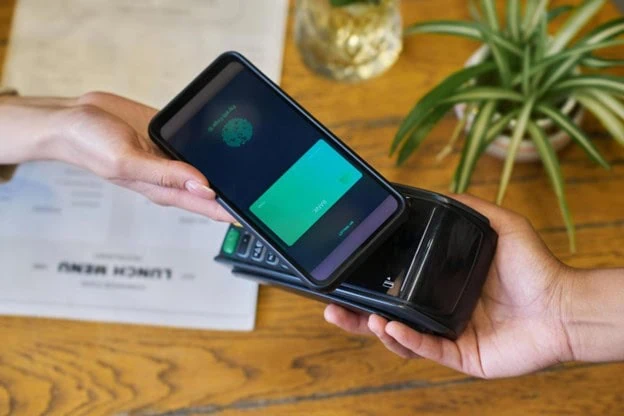The way we access our money is changing fast. Remember when we thought chip-and-PIN was cutting-edge? Well, forget about remembering a string of numbers because your body is now your password. Biometric authentication, using fingerprints, facial recognition, and even iris scans, is quickly becoming the standard in banking security. According to a report from the Center for Identity at the University of Texas at Austin, fingerprint scanners are the most widely used form of biometric authentication, with face recognition and iris scanning technologies also seeing increased adoption
Banks and fintech companies are ditching traditional authentication methods for biometrics: fingerprints, facial recognition, and even voice authentication. It’s faster, safer, and, frankly, a little bit sci-fi. But is it foolproof? And should you trust it with your money?
PINs Are So Yesterday—Why Biometrics?
Think about how many passwords you have. How many times have you had to reset one? Now, think about something you can’t lose, forget, or have stolen—your fingerprint, your face, your voice. That’s why banks are turning to biometrics.
With cybercrime on the rise, traditional PINs and passwords just aren’t cutting it. They can be guessed, stolen, or cracked. Biometrics, on the other hand, make fraud exponentially harder. Even if someone knows your birth date, mother’s maiden name, and first pet’s name, they still can’t replicate your unique biometric data.
The Big Three: Fingerprints, Faces, and Voices
Biometric banking isn’t a one-size-fits-all deal. Different banks use different methods, but here are the top three you’ll see everywhere:
Fingerprint Scanning: The Classic Choice
Fingerprint authentication is already on your phone, so why not your bank? Many banking apps now let you log in with just a tap of your finger. It’s fast, easy, and (mostly) secure. Unless, of course, someone has a high-quality copy of your fingerprint—but let’s be real, that’s a Mission Impossible-level problem.
Facial Recognition: Your Face as Your Password
No need to type anything—just look at your phone and you’re in. Banks are integrating facial recognition software, making it possible to authorize transactions just by showing your face. Apple Pay, Google Pay, and big banks worldwide have already jumped on board. The risk? Well, some systems can be tricked with high-resolution photos or deepfake technology—but security is improving every day.
Voice Recognition: Speak to Unlock
Your voice has unique characteristics, from tone to pronunciation quirks, making it a surprisingly secure authentication method. Banks like HSBC already let customers use voice recognition for identity verification. The challenge? If you’ve got a cold, you might be locked out of your account.
Is Biometric Banking Foolproof?
No security system is perfect. Biometrics are incredibly secure compared to traditional PINs and passwords, but they’re not invincible.
- Hacking risks: While it’s hard to steal a fingerprint, biometric databases are still vulnerable to cyberattacks. If hackers get into a system, they could potentially replicate biometric data.
- False positives and negatives: Sometimes, even your own phone doesn’t recognize your face or fingerprint. Lighting, angle, or even a sweaty finger can interfere.
- Privacy concerns: Handing over your biometric data means trusting banks to protect it. If breached, you can’t just change your face like you would a password (well, not easily, anyway).
How Banks (and Lenders) Are Keeping It Safe
The good news is that banks and financial service providers are taking extra steps to secure customer data. Many use multi-factor authentication (MFA), combining biometrics with additional verification methods like device recognition, encryption, and one-time passwords, to add layers of protection.
When it comes to online lending, security is just as crucial. Whether through encryption, fraud monitoring, or other security protocols, prioritizing safe borrowing practices helps protect users from identity theft and cyber threats.
Service providers like CreditFresh emphasize data protection, ensuring borrowers’ sensitive information is safeguarded throughout the application process.
Borrowing Online? Security Matters More Than Ever
Biometric authentication isn’t just changing how we access our bank accounts—it’s also making online borrowing safer.
When borrowing online, it’s crucial to choose financial institutions that prioritize security, ensuring your personal and financial details stay protected. Whether you’re taking out a loan for unexpected expenses or managing cash flow, biometric security adds another layer of protection against fraud and identity theft.
The Future of Banking: Beyond Biometrics?
Biometrics are just the beginning. The future of banking security could involve even more futuristic tech, like behavioral biometrics (analyzing how you type or hold your phone), palm vein recognition, or even brainwave authentication. Behavioral biometrics is already gaining traction as a security tool, with research highlighting its potential to significantly reduce fraud risks. A scoping review published by the National Library of Medicine summarizes the current state of behavioral biometric authentication and synthesizes key findings about its applications.
Unlike traditional biometrics, which rely on static physical features, behavioral biometrics continuously analyze user behavior, such as typing speed, touchscreen pressure, and even mouse movements, to detect anomalies and unauthorized access attempts. According to the study, behavioral biometrics can enhance security by identifying suspicious activity even when login credentials or biometric data have been compromised.
Should You Use Biometric Banking?
Short answer? Yes. Long answer? Yes, but with caution. Here’s what you can do to keep yourself safe:
- Enable multi-factor authentication whenever possible.
- Keep your banking apps updated; security patches matter.
- Be aware of phishing scams that try to trick you into giving up biometric data.
- Only use trusted banks and apps; shady software can compromise your data.
Final Thoughts: The Death of the PIN?
Are PINs and passwords going extinct? Probably. Biometrics are becoming the gold standard in security, making banking easier and safer. But with great convenience comes great responsibility. Banks need to continue strengthening security measures, and users need to stay smart about their digital safety.
The future of banking isn’t just at your fingertips—it is your fingertips.



